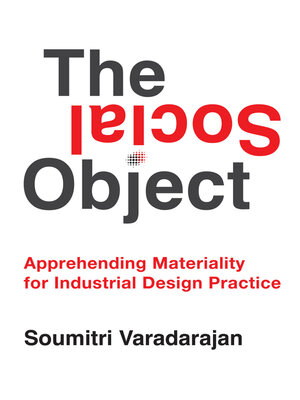The Social Object
ebook ∣ Apprehending Materiality for Industrial Design Practice
By Soumitri Varadarajan

Sign up to save your library
With an OverDrive account, you can save your favorite libraries for at-a-glance information about availability. Find out more about OverDrive accounts.
Find this title in Libby, the library reading app by OverDrive.



Search for a digital library with this title
Title found at these libraries:
| Library Name | Distance |
|---|---|
| Loading... |
The Social Object uses the methods of design history, material culture studies and the social construction of technology to analyse the domestic spaces and objects in the homes of the middle class in India. The book describes how people make meaning of the objects they buy, own, and gift.
This is a book about the biography of projects and objects. The projects in the book serve as book ends to a detailed and affectionate account of the biographies of objects within the homes of the not so rich.
The aim of the author has been to silence the voice of the designer to allow the accounts of objects to emerge as periodic irruptions that reveal a hidden maelstrom of passion, ideas and failed projects. The book opens with the biography of a project dealing with waste, leading the reader to a very particular kind of object, the bads. This object is illicit, handled by criminals and in the writing by the author serves to invert the dominant discourse of objects as commodities. This book makes the case that the program of design is better seen as a democratic community, where the householders, the zietgiest, technology and all manner of hidden agents collide to allow unforseen periodic objects to emerge.
Varadarajan argues against a simplistic universal account off the way we think about how objects are designed. As an enterprise, the book was a journey to assemble the evidence - of places and objects - and observe the enactment of practices with the objects. It was also a project of speculation upon the possible ways in which objects come to be, as local collaborations of action.







